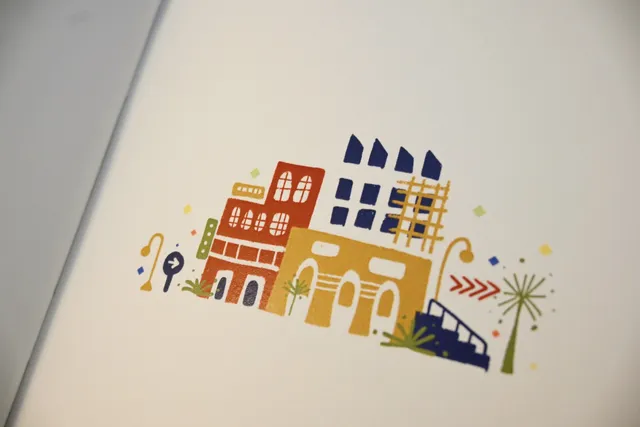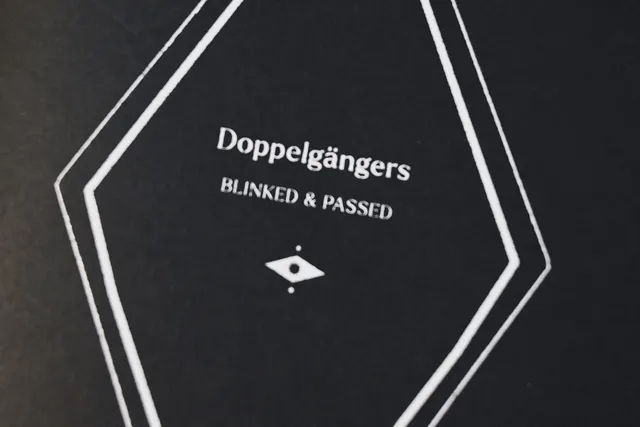The making of Play (With) Me
The creative process of the second act of 'trauma trilogy', and a sharp critique on power dynamics in psychotherapy practice.
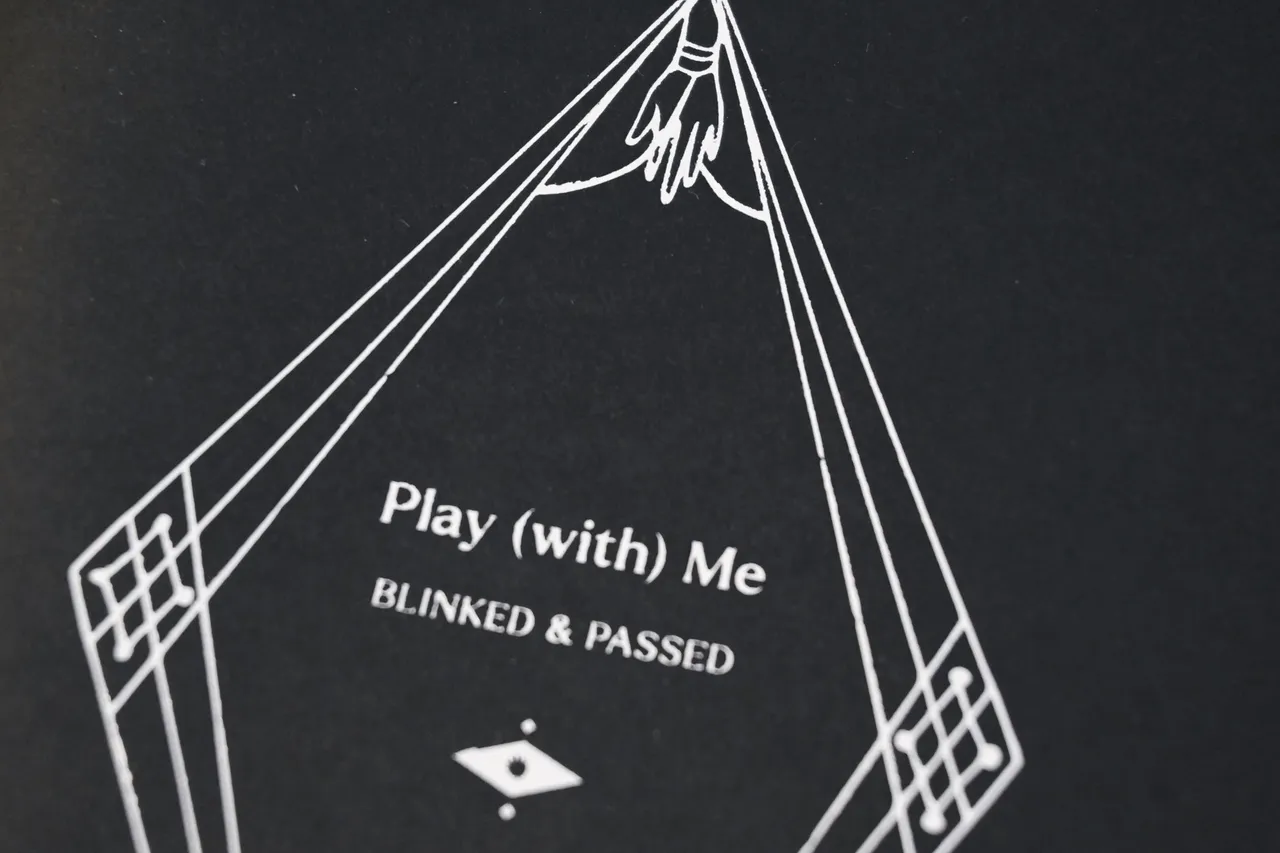
Trigger warning / author's note / disclaimer: this article explores therapy abuse, emotional abandonment and mature themes. Viewer discretion is advised. To have a quick overview of the project, please read this page. All the details of the zine are anonymised to ensure privacy and safety. This zine aims to give form to a difficult and often silenced experience, encouraging a necessary conversation about accountability, ethics, and client safety in therapeutic practice.
What happens when the one you trust and knows your darkest secrets betrays you? What would you do if that person is your therapist? My illustration zine play (with) me is an artistic exploration of the potentially grotesque power dynamics of therapy abuse that is unfortunate not as rare as one thinks. The story starts with a young female client who discovers her dark desires and tells them to her trusted male therapist, who later takes advantage of his client’s vulnerability. Inspired by innocent childhood games and toys, the zine adopts these elements as ironic, sinister metaphors of the toxic relationship. It is a creative response to broader, documented issues in the mental health field, such as the mishandling of transference and countertransference, boundary violations, and the psychological impact on vulnerable clients.

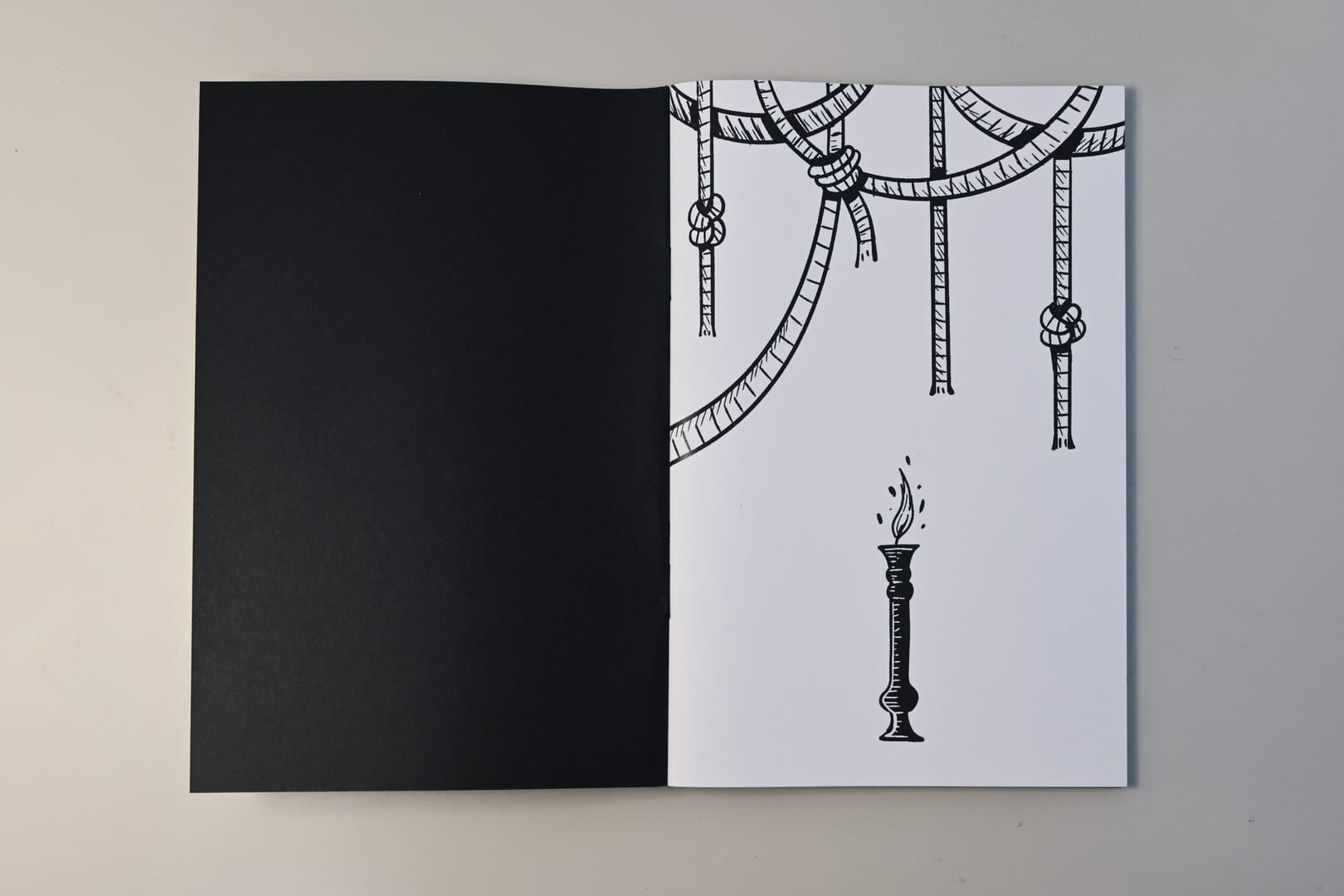
The story behind the story
To illustrate the themes explored in this zine, consider the following scenario, which is constructed from compiled narratives:
The zine draws from compiled narratives to explore a toxic long-term therapeutic dynamic. A female person with mental illness sought help from a male therapist. While in therapy, she told her dark desires to him and wrote her fantasies in her journal, and things went awry. The therapist would ask her to read her sexual fantasies aloud and even when he knew that the client was embarrassed, he would tell her to 'own and be proud of her works'. Alternatively, he would read the explicit scenes until she couldn't bear it due to embarrassment. One time, she wanted to hand her notebook to the therapist and noting that she was hesitant, the man tried to pull the notebook from her and she pulled it back, until he let go, and the young woman handed him the journal meekly. While it is normal to discuss mature topics in psychotherapy, when sexual fantasy is seen as 'literary work', it is taken away from the therapeutic context and instead becomes an object of potential voyeurism, which contradicts with the industry's ethical practice.
The young woman sensed that she developed transference towards the therapist – she knew there was a strong obsession, but she knew that clearly wasn't love – and addressed the issue to eliminate the confusion, but the problem was never discussed in detail, only a simple reply from the therapist, mentioning that he was the symbol of something unknown of her. Regardless of the confusion, she felt like he was the only one who completely understood her. Transference is projected feeling of the client towards the therapist, which when explored carefully and professionally, it is the key to understanding significant interpersonal relationships / dynamics of behavior of the client and deep healing. However, when this is not addressed, it is very likely that it will lead to damage in therapeutic alliance and effectiveness of the therapy.
The female person had cleaning OCD and when she failed to accomplish the task assigned by the therapist, he was appalled. She cried and replied she was really scared of dirt, and then to her astonishment, the male therapist used his physical presence to intimidate her and placed the office trash bin right next to her. He asked whether she was now still scared. She was even more frightened. At the end of the session, he threatened her that he will no longer treat her if she could meet the goal next time. The client tried so hard and blamed herself as she didn't want the therapy to end, and the therapy continued. In a professional setting, a therapist should never threat their client when they cannot meet the goals. Instead the therapist should explore with the client the difficulties they face and possible ways of healing, all done in a safe, open and neutral manner.
The client experienced unwanted touch from her same-sex peers, even when she clearly expressed that she didn't want it. She told the therapist, but then he asked if she was being coy and secretly wanted it. She firmly said no, and he said that she could treat it as 'doing some good deeds'. She didn't know how to respond and felt really insulted and neglected. She wanted to cut herself, so she texted him. But then he said she shouldn't contact him, instead she should go to hospital. He warned that if she texted him again, he would block her. The client felt helpless and cut herself. She wrote a letter to express how distressed she was, but she wanted to give him a chance as she trusted him. The therapist apologized, and you guessed it – the therapy continued. When a client reports sexual harassment, a therapist (or any person) should always take it seriously instead of joking. The therapist's reply is a classic example of victim blaming, which is unfortunately still prevalent in our society. Moreover, while professional boundaries should be adhered, when a client faces life-threatening situation, a therapist should remain composed and calm and offer proper solutions instead of immediately showing anger and threats.
The final straw happened during a therapy session, when the therapist said he was about to die. She didn't understand, and tried to lighten things up a bit. He said she didn't know what despair looked like, and blamed her for not being sensitive and not comforting him. The woman was devastated and apologized, tried to say everything she could to make up for it and help the therapist, but he wouldn't listen and stop being professional during the sessions. The woman was broken, she harmed herself and thought of drinking liquid soap to show her pain (but she didn't). Her family pleaded her stop going to the therapy, and finally, she left the therapist. She felt like the pain was comparable to a divorce, and sensed that this had distorted the way she would face opposite sex. In a professional setting, a therapist should never disclose their personal details to the client and seek emotional support from the them. This is a typical example of role-reversal and emotional enmeshment, which the therapist exploits the unequal power dynamics. If they realize they are no longer able to treat the client, they should refer the case to another therapist with a carefully handled termination process of the therapeutic relationship.
You may ask why the female client never left, given how the therapist treated her. First of all, this can't be solely explained with logic. When a person is extremely vulnerable, they will hold onto anyone they think that they can be trusted, even if they may do harm on them. They will try to forgive the therapist and try to mend the relationship. Moreover, we are talking about therapeutic attachment and intense emotions like transference, this can distort the thinking of the client.
On deciding the theme, approach, and title
As you see, it's utterly a grotesque power play disguised as therapy, an ultimate mockery of the highly regarded profession. I feel the urge to address this lesser-known but critical issue of the institution, so I create this zine. Instead of going totally straight-forward and confessional, I decided to mix things with rich metaphors inspired by childhood games. Why games though? First, they play a crucial part in mental development. Second, they can be adopted in therapy to let the clients relax, interact with the therapist, and express themselves in a less overwhelming, but equally effective way. Third, when using them as sinister metaphors of various stages of the relationship, this echoes with the essence of this toxic therapy – that the therapist treated his client like a toy, his profession like a game. This leads to the naming of the zine – play (with) me. On one hand it feels innocent and warm when you read it as 'play with me', but on the other hand it reads 'play me', just like how the therapist saw the client – coy, inviting, eager, disposable, a device that satisfies his unspoken desire that she will never know.
Narrative structure and metaphors
The zine is divided into 8 chapters, each stage of the therapeutic relationship represented by a childhood game / toy. Adopting black and white aesthetic, each chapter starts with a photo, then the story text from the first-person perspective, presented in experimental typography, and then the main illustration. The combination of the media aims to tell the story in a factual, yet expressive way — the photo (realistic depiction) in high contrast tones amplifies the visceral sense of authenticity, creating an effect similar to visual evidence of a crime scene. The experimental typographic layout complements the emotionally charged content, while the surreal, sometimes sensual illustrations give the readers a glimpse of the inner world of the female client. Now let's explore the metaphors of each chapter.

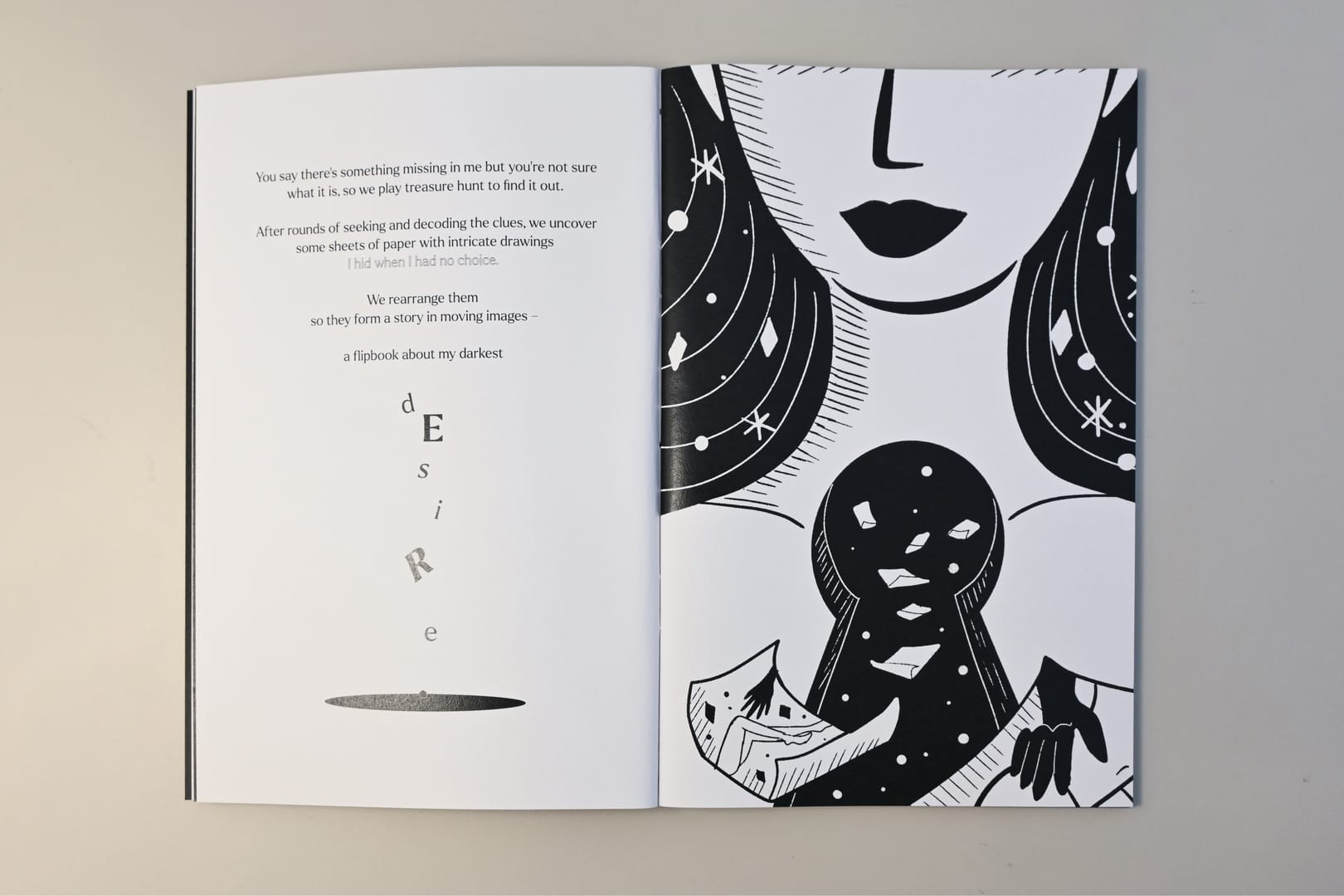
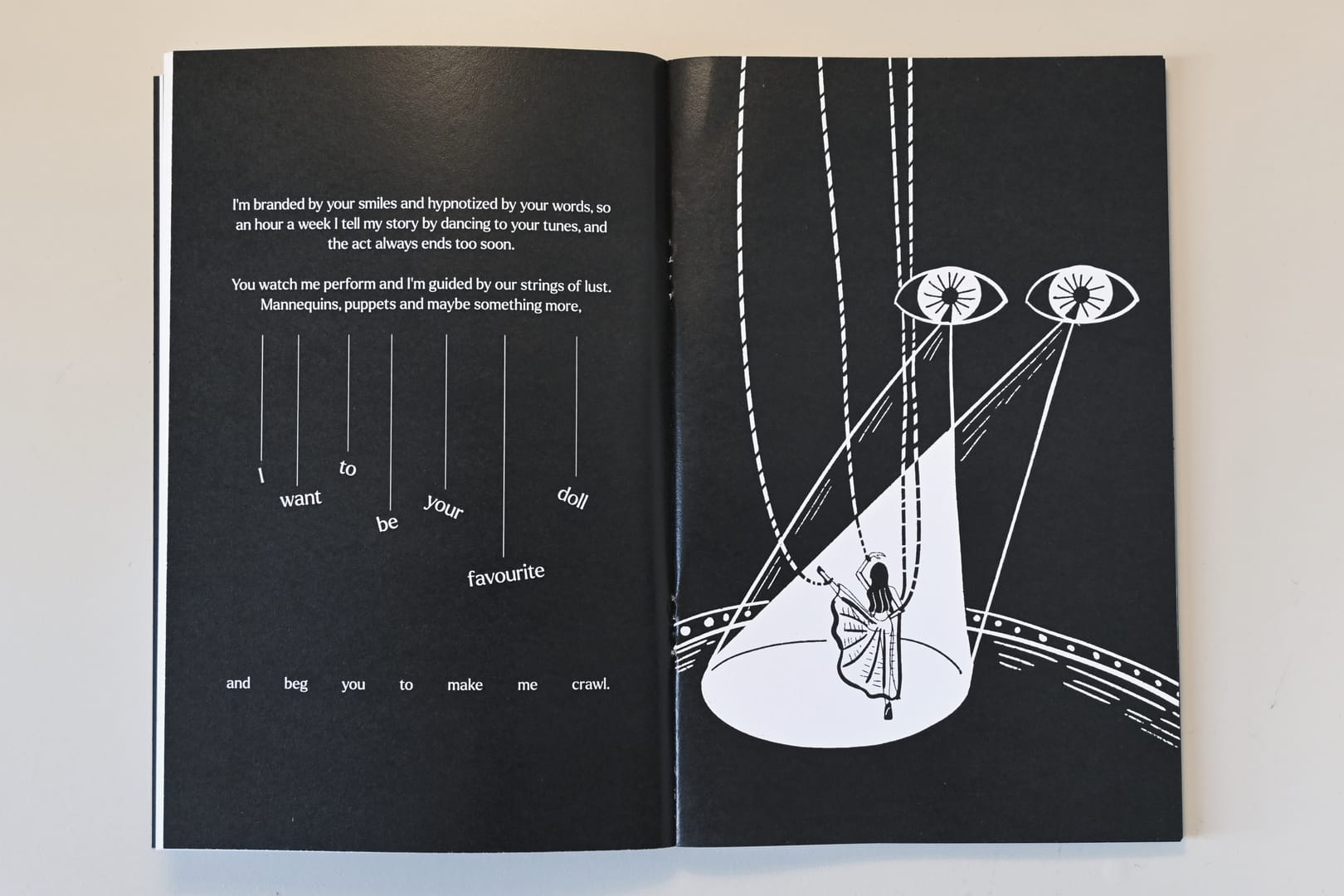
Chapter 1: ghost leg
Ghost leg is a game that pairs two entities in a random manner. This marks the beginning of the relationship – that the client by chance gets to know this specific therapist, something that fate seems to assign to her. It also shows that the client has no clue or prior knowledge on how their therapist will be like except the professional qualifications displayed, due to the supposedly strict ethical boundaries.
Chapter 2: treasure hunt
In a treasure hunt, the players aim to find out the specific object as the reward. In the context of the story, the client and the therapist together find out her underlying emotional / psychological issues. This is the first step of the therapy. The specific object here is a flipbook of the client's darkest desires.
Chapter 3: flip book
A flip book is an optical device. A set of images are placed at the corners of each page, and when flipped, the images appear to move and display a moment or a story. This represents that the client's desire has to be viewed as a whole instead of only one element. Here, the flip book is described as having patterns of intertwined bodies. The client was shy but the therapist told her to 'own her desires'. By turning the booklet that's popular among children into something of carnal nature, it fits the ironic theme of power play. Moreover, this is how the seemingly innocent games go awry.
When working on this illustration, the most challenging part is about how to make it sensual without being explicit. This is crucial as the whole point of the story is not about sexual fantasy, it's about the unfair power dynamics triggered by the desire when handled incorrectly. I decided to steer clear of all reproductive body parts and suggestive facial expressions, instead I focus on the movements of limbs of the two people, and turn them into patterns generated by a kaleidoscope.
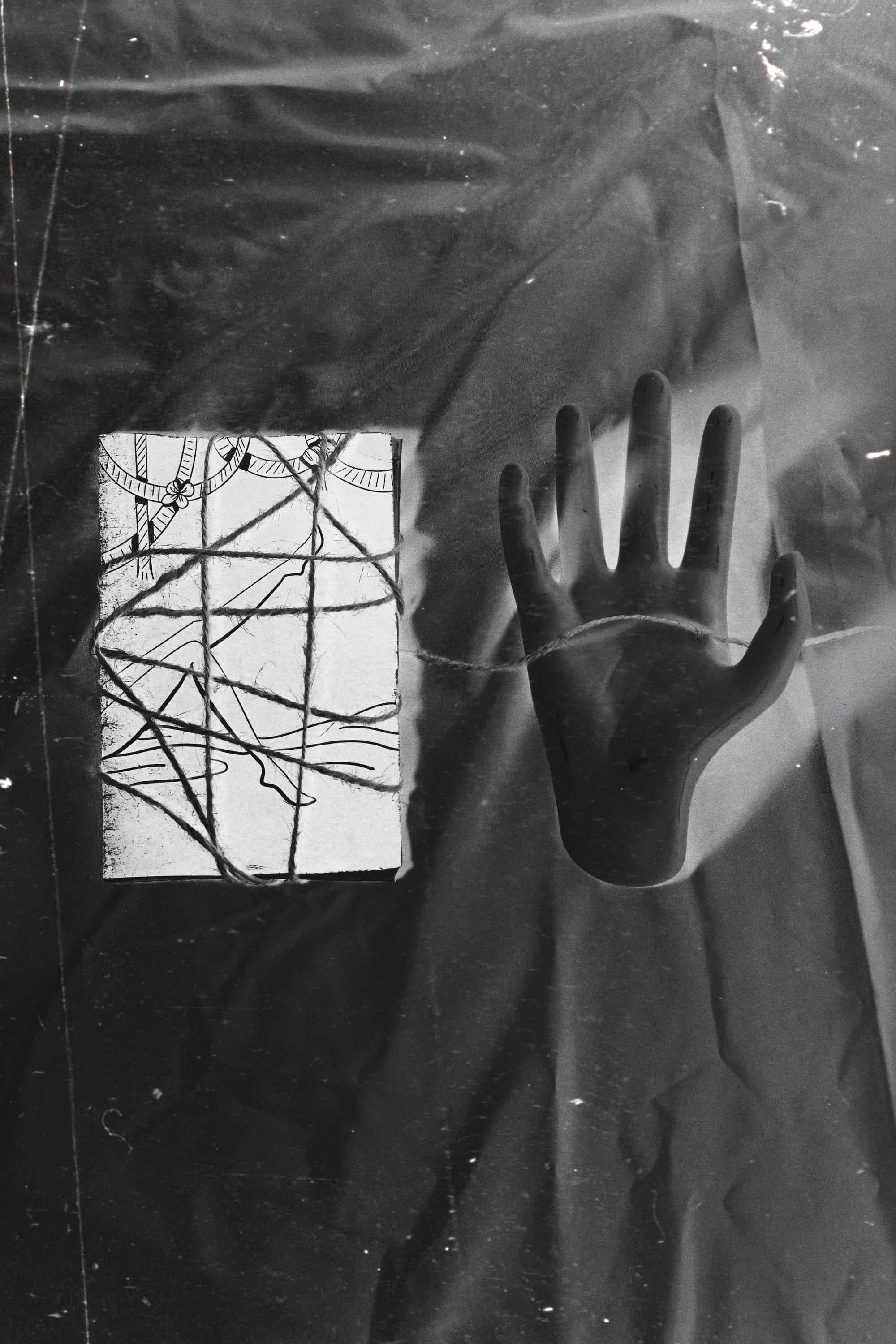
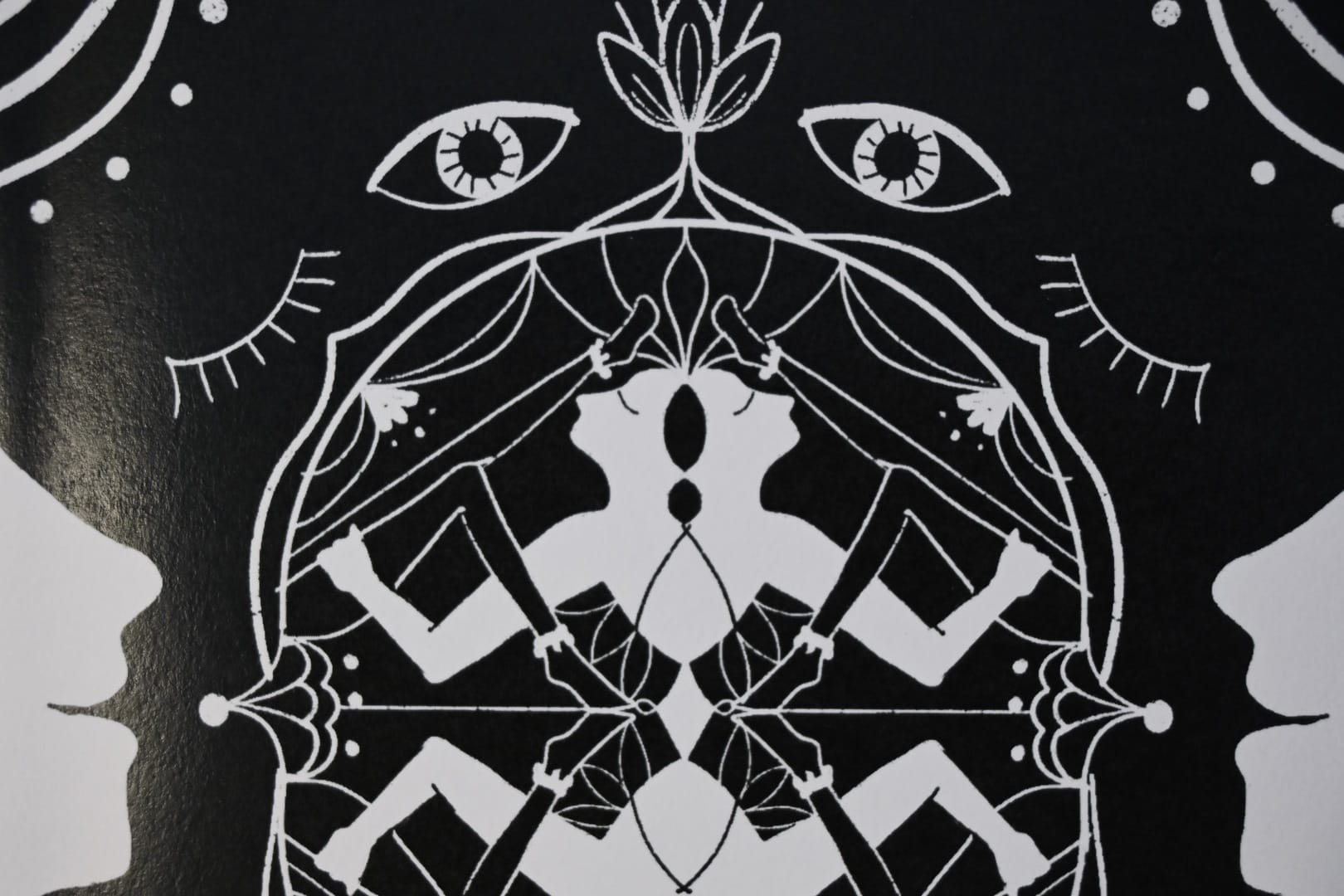
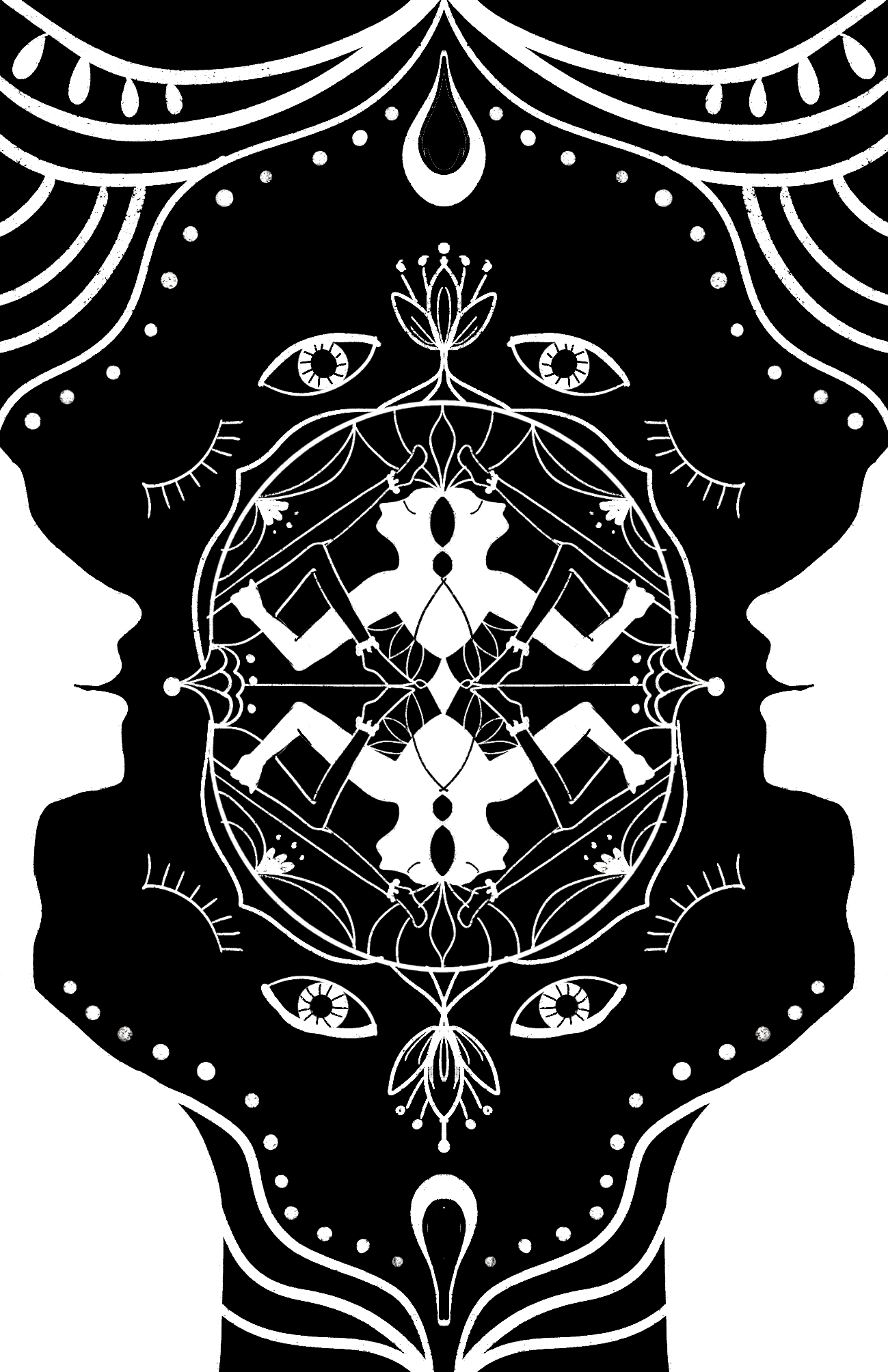
Chapter 4: marionette
Marionette is a doll controlled by strings, which can be used to tell a story. The grotesque part unfolds here –the client becomes a marionette that tells her story, guided and manipulated by the therapist who has unspoken desire. She wants to be submitted to him emotionally due to transference.
Chapter 5: hide-and-seek
This one is straightforward – the person wins the hide-and-seek game when they find the targeted person. This represents the client tries to turn to the therapist when in difficult times, but she is not able to get the help needed, instead she experiences emotional neglect.
Chapter 6: cat's cradle
Cat's cradle is a game that uses pieces of strings to create loops between fingers. The strings here echoes with the strings of marionette, hinting the control and manipulation. The web formed is a direct metaphor of the client and therapist being entangled emotionally due to the unresolved transference and countertransference.
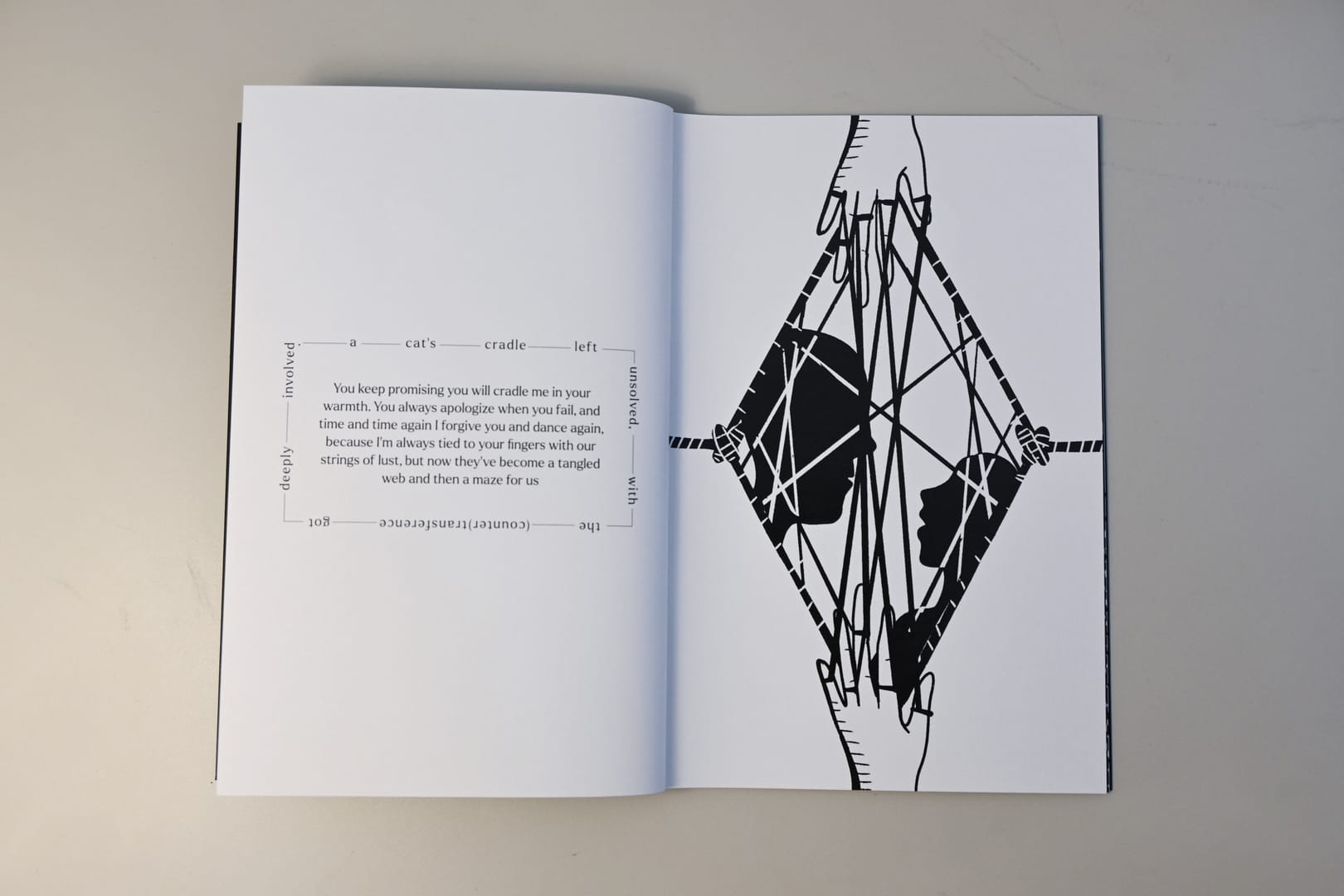
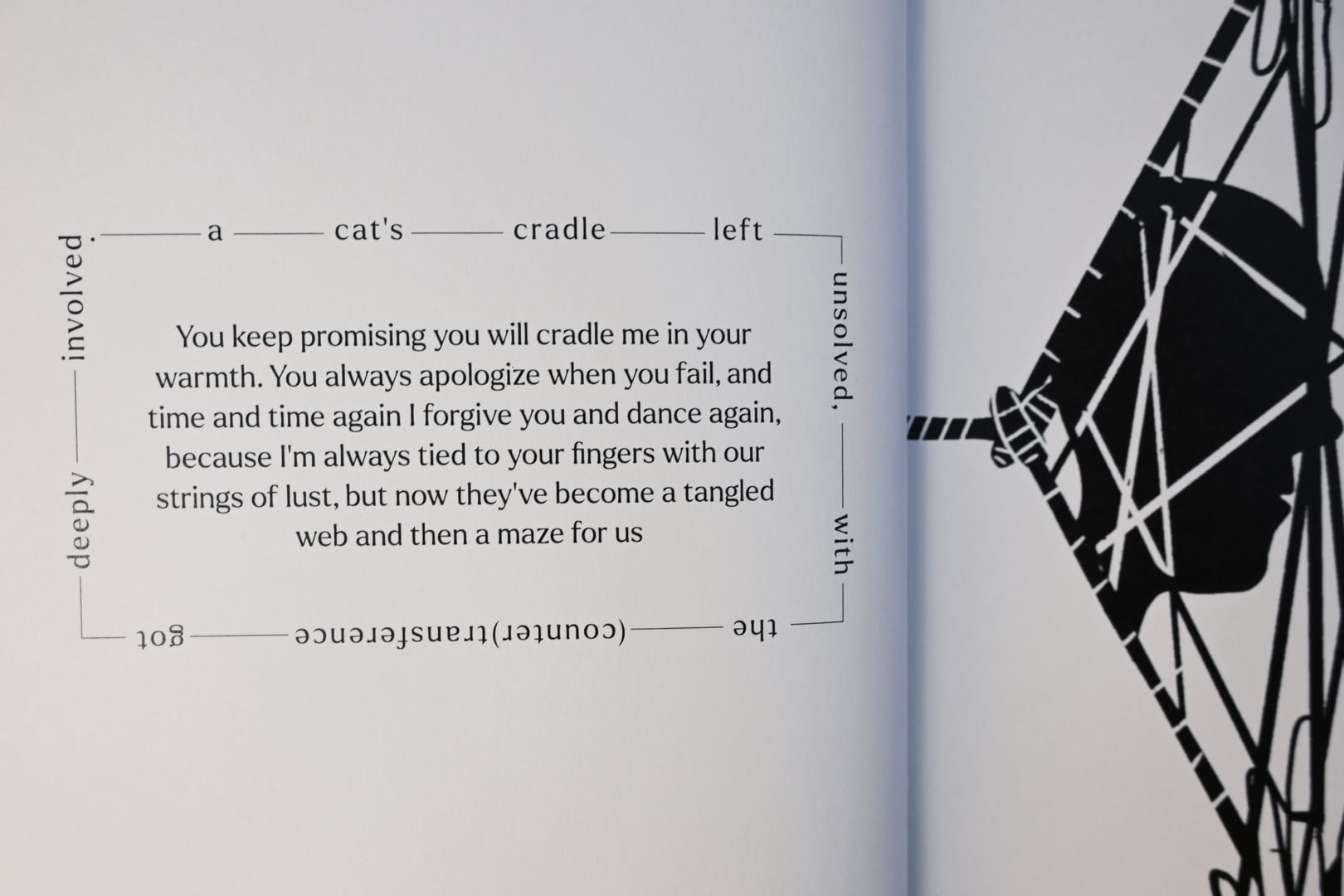
Chapter 7: maze
This one again is a straightforward one. The maze in the story doesn't have an exit. The client tried to escape from the emotional entanglement, made up for her mistake, and make sense of everything, yet she couldn't find the way out. In the illustration, the therapist left her in the maze, a brutal metaphor of emotional abandonment.
Chapter 8: ragdoll
The metaphor of the last chapter is a ragdoll left in the dark, which represents the client being left alone and deciding to leave him. In the photo, there's a candle that burns the string tied to the female person's leg. It seems that there's danger for the client, but it's not – the fire (fiery anger) sets her free, and in the illustration, the flames burn the therapist. It's an intense scene, but it also shows that the client is willing to reclaim herself.
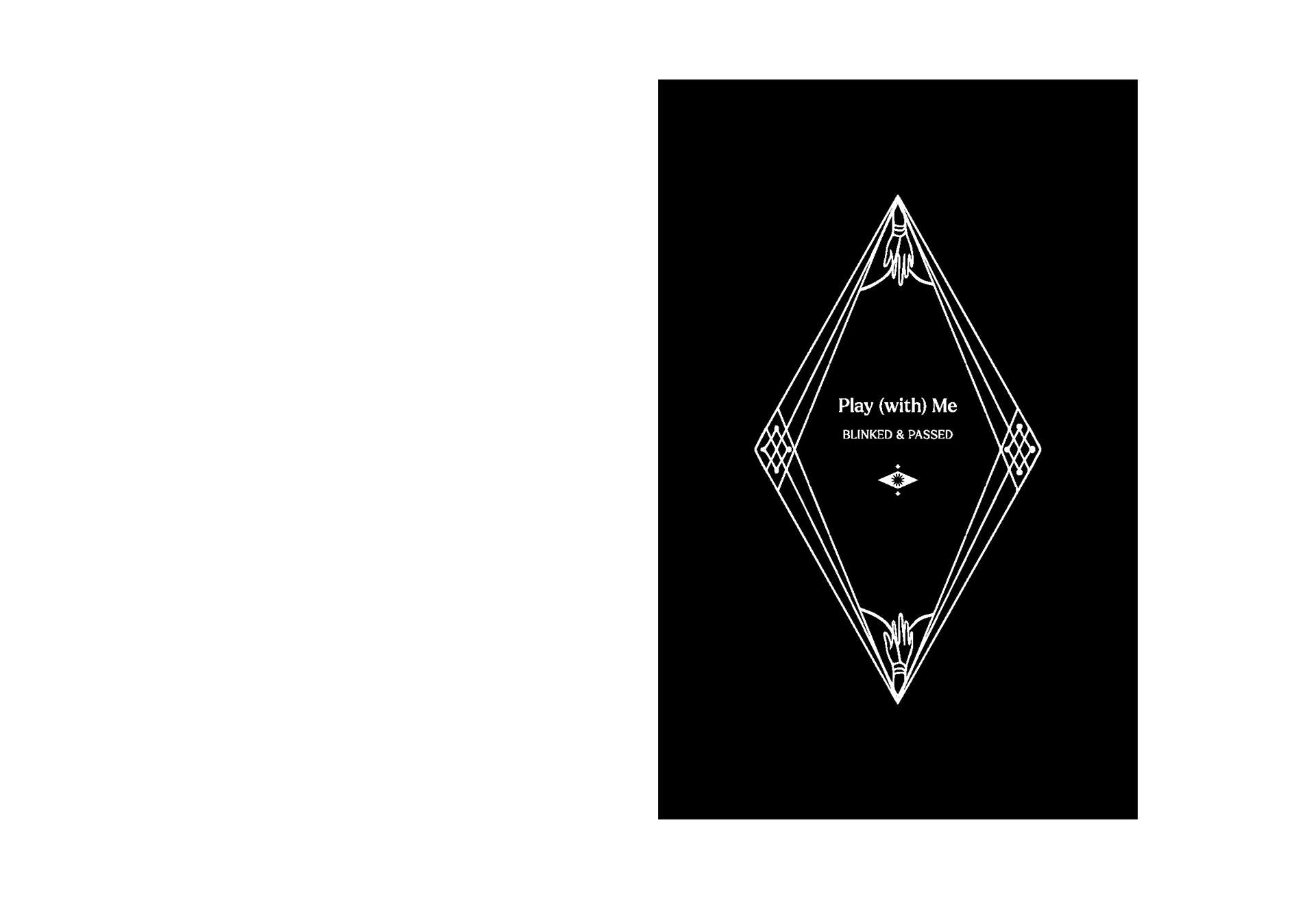
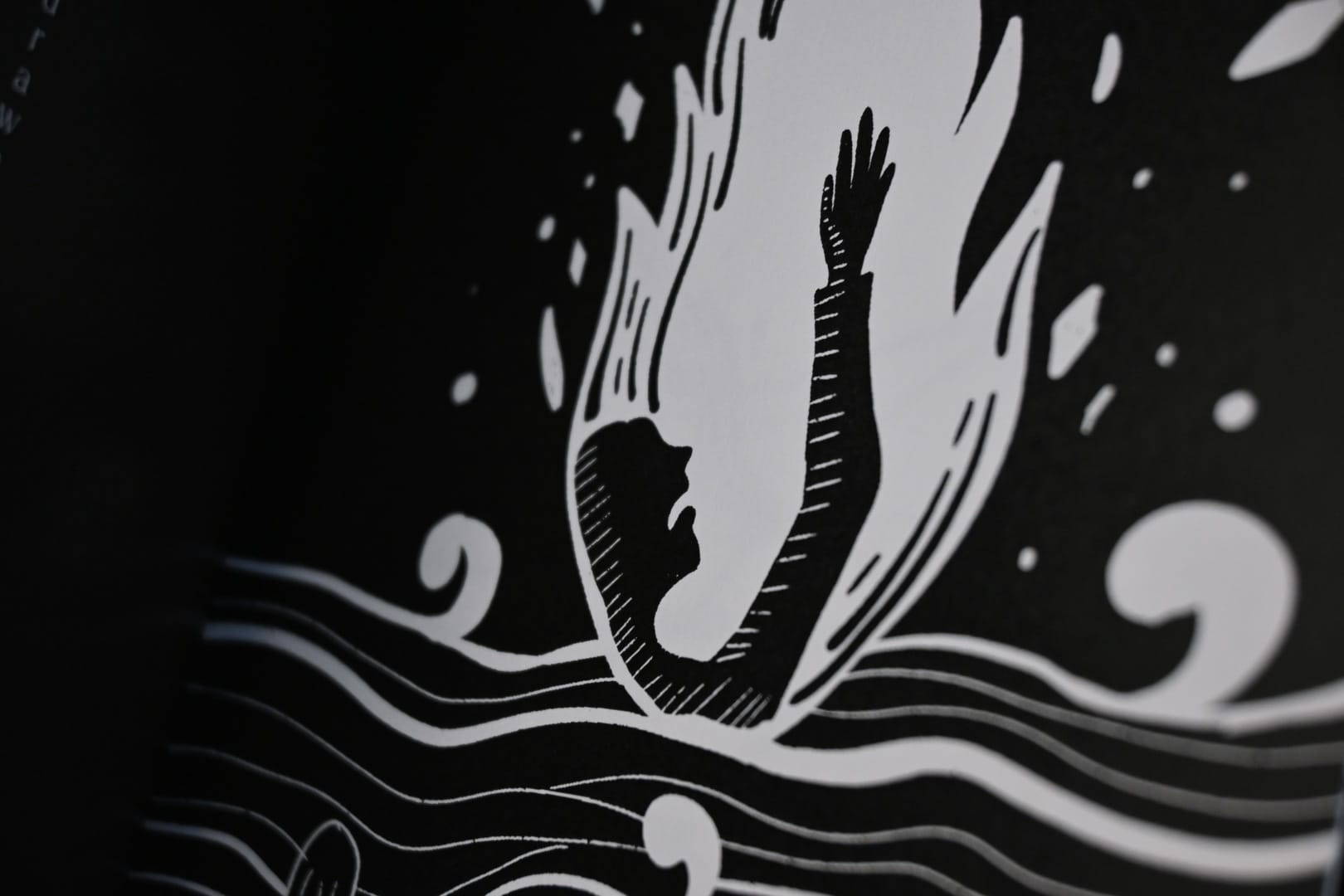
I hope this zine serves as a cautionary tale of the dark side of therapeutic relationship, and spark discourse on a societal and personal level. Your closed one who is in therapy could suffer from systemic violence silently. They may blame themselves and try to fix everything when they have done nothing wrong. Therefore, I'd like to take this opportunity to implore you to show some more specific care and empathy to them, and keep a close eye to the therapeutic progress. It is a challenging job, but this is one of the crucial ways to support your closed ones who are in therapy.
